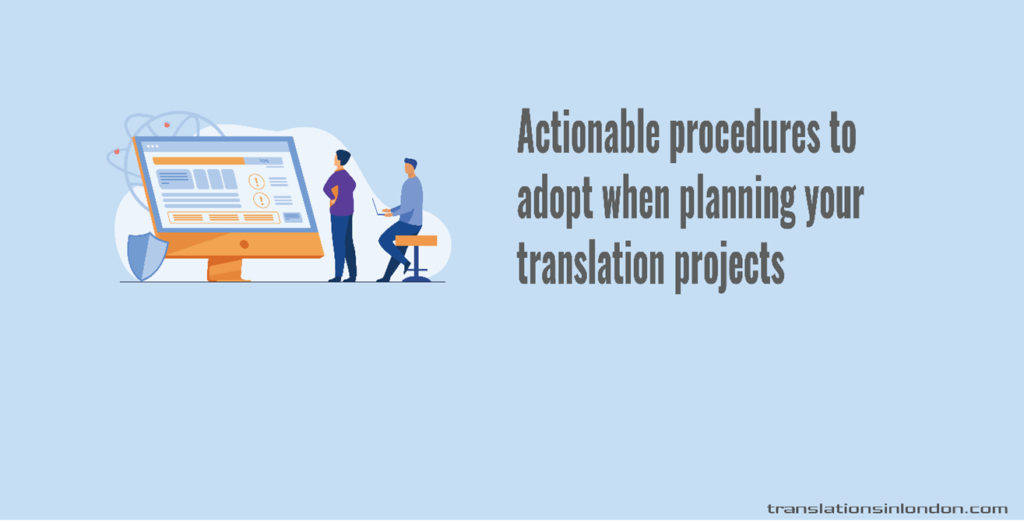
Businesses opt for translation for several reasons. It could either be to increase their brand’s reach or maybe because their competitors are doing it. Irrespective of the reason, project managers have to consider several things when they plan a translation project.
For starters, the translation needs to be thorough, and it also needs to convey appropriate meanings and emotions.
It is always beneficial to have a roadmap at the beginning that guides the process and ensures that nothing is left out.
As professional translators, we have put together a short guide of actionable procedures that you can adopt to help your translation project a smooth and successful one.
This guide will be useful for different categories of people; businesses, individuals, SME’s brands, etc. It may serve as preliminary consideration to apply before you employ a professional to ensure that you are on the right path.
Procedures to take while planning your translation project.
Let us begin by answering the question everyone has in mind;
Why do you need to plan for every translation project?
Every translation project needs planning because translations must be thorough and specific to your niche and the local language context. A good translation plan should adopt these procedures;
1. Work out the languages that matter
The first thing to do is to identify your target language for translation, and this goes beyond just choosing languages to also deciding on the local language context you want. In many cases, the basis of this decision hinges on areas you plan to expand to or your target audience for sales.
A comprehensive list including language locality is the product of this step.
2. Figure out the documents to be translated
Translation projects are specific, and you need to know what exactly requires translation. Information might include legal documents, business proposals, websites, and the likes.
By compiling a list of everything to be translated, you can clearly plan for the translation process.
3. Smooth out the details
We always recommend that businesses figure out little aspects beforehand. The details might include a particular communication style you wish to preserve — either formal, informal or poetic. —
It might also involve enthusiasm in the communication. These little details must remain in translation, otherwise, you might fail to relay your intended message.
4. Pick out a translation company
With the right preliminary work done, it is time to pick out a translation company. The good news is; if you have taken the first three steps, it will help you know what translation company is right for you.
It is essential to pick out a company that can undertake the scope of your translation project. Choose an agency that understands your language style and any other technical requirements. Feel free to check the company’s client portfolio to make this decision.
5. Create a translation schedule
Haven picked out a translator, communicate with them to create a translation schedule. A translation project could take weeks or months, depending on the scope. It is critical that it does not disrupt normal activities. Therefore, you need to know the duration and work out a critical path to managing the project.
6. Plan for proofreading
Just like every other project, a translation project needs to be tested before the full launch. Many people often forget to plan for proofreading, thereby leaving room for errors with expensive consequences. Usually, an accomplished translation company will tell you this while planning the translation schedule.
NB! Any translation agency you work with should be aware of your company’s mission and vision statement as it will enhance the accuracy in the style of translation.
The role of an LSP in translation projects
If you are in a technical industry or your translation project is more sensitive than merely translating words to another language, you will need an LSP. Language Service Providers (LSP) do more than translation. Their jobs often include contextualization, localization, SEO, copywriting, translating technical documents, software translation, and so on.
In conclusion, preliminary actions before a translation project will enable you to have a smooth and accurate translation. However, when it comes to hiring the right translator, it is important to choose the right LSP for the job. The company’s portfolio must be assessed to know if the project is within its capabilities.
For over a decade, TranslationsInLondon has handled various projects including those within technical fields. Give us a call or send a message today to get started.